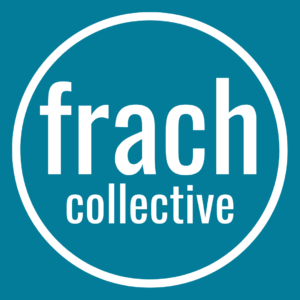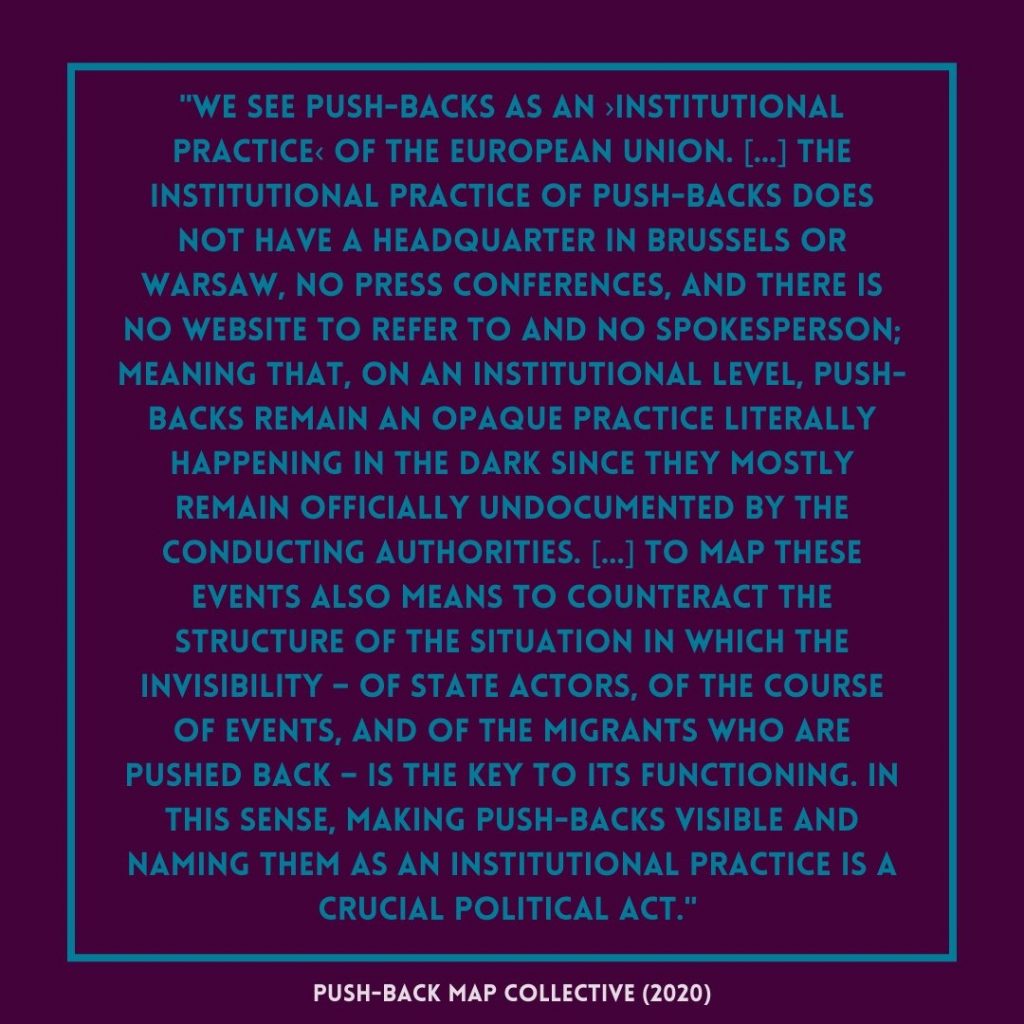
Push-Back Map Collective
Die Bilder eines Rechercheteams, u.a. bestehend aus ARD-Studio Wien, ARD-Magazin MONITOR, SPIEGEL und Lighthouse Reports, die in den letzten Tagen mediale Aufmerksamkeit erlangten, zeigen reale Aufnahmen der humanitären und politischen Verbrechen, die seit Jahren täglich an der EU-Außengrenze auf der Balkanroute von der kroatischen Interventionspolizei verübt werden. Das systematische Vorgehen, das auf den Aufnahmen zu sehen ist, wird uns hier in Bihać, Bosnien-Herzegowina, von People on the Move (PoM) immer wieder aus erster Hand bestätigt.
Satellitenbilder zeigen den Ausbau einiger Straßen, die in abgelegenen Gebieten Kroatiens direkt an der „grünen“ Grenze zu Bosnien-Herzegowina enden. Zwischen 2019 und September 2021 wurden sieben neue Straßen in Grenznähe gebaut. Pushbacks wurden vor allem an diesen Orten dokumentiert, was als Hinweis auf die Systematik der Abschiebungen gedeutet werden kann.
Doch selbst diese Recherchen können das Ausmaß der Gewalt nur schwer erfassen. Die dokumentierten Fälle verdeutlichen lediglich die Qualität der Perversion und können für sich genommen nur Indizien für die Vorgänge im Hintergrund liefern.
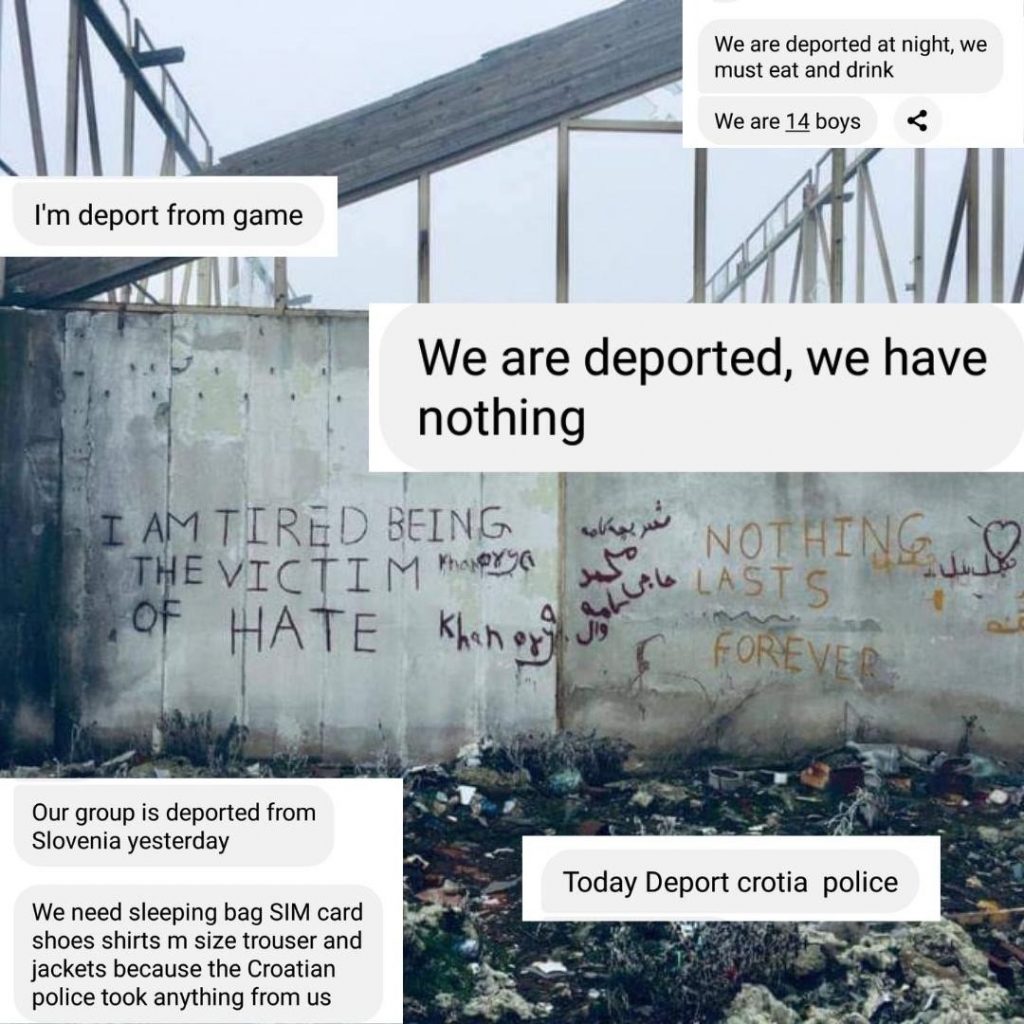
Was auf dem Filmmaterial zu sehen ist, wurde jedoch in den letzten Jahren von Organisationen in großer Zahl festgehalten: Entlang der Balkanroute dokumentierte das Aktivistennetzwerk „Border Violence Monitoring Network“ 892 Sammelabschiebungen mit 12.654 Abschiebungen seit 2017 bis 2020, der „Danish Refugee Council“ dokumentierte allein für 2020 fast 16.000 illegale Zurückweisungen in Kroatien, wobei bei beiden Erhebungen von einer hohen Dunkelziffer ausgegangen werden muss. In der Realität bedeutet dies, dass ein großer Teil der PoM oft jahrelang mit mehrfachen Abweisungen konfrontiert ist und die Menschen lange unter unmenschlichen Bedingungen festsitzen müssen. Jede vierte Abschiebung steht im Zusammenhang mit systematischer Gewalt, in der Hälfte der Fälle wurden notwendige persönliche Gegenstände, wie Brillen, Papiere, Handys, Schuhe, Kleidung und Geld entwendet oder zerstört, um den Menschen den Weg zu erschweren.
Der Bericht des Border Violence Monitoring Network vom August 2021 dokumentiert, dass nur in 7 % der Pushback-Fälle keine Gewalt gegen PoM aus Afghanistan angewendet wurde.
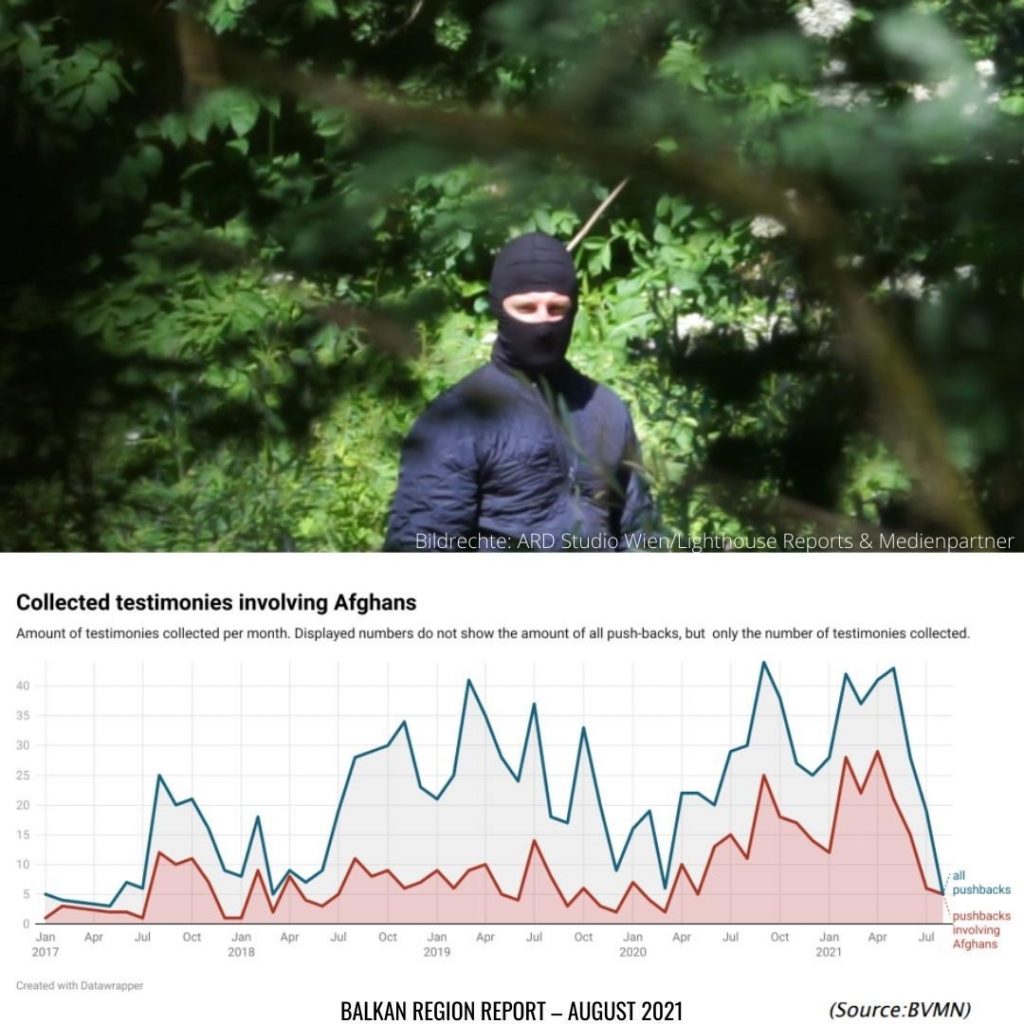
In 77 % der Fälle wurden die Menschen geschlagen oder getreten, und in 61 % der Fälle wurden sie von der Polizei bestohlen. 26 % mussten sich entkleiden und in 15 % der Fälle wurden Schusswaffen eingesetzt. Dies geschieht sowohl an den Grenzen als auch im Landesinneren.

Wir erhalten sogar täglich Berichte über Pushbacks aus Slowenien, Österreich und Italien – so genannte (auch illegale) Ketten-Pushbacks: Menschen werden in Polizeiautos zurückgefahren, an der Grenze an die Polizei des Nachbarlandes übergeben und so hinter die kroatisch-bosnische Außengrenze abgeschoben.
Jede Form von Pushback stellt einen mutwilligen Verstoß gegen die Genfer Flüchtlingskonvention, das Völkerrecht sowie geltendes EU-Recht dar, da keine Einzelfallprüfung stattfindet und das Recht, einen Asylantrag zu stellen, verweigert wird. „Pushbacks sind schlichtweg illegal“, so Gillian Triggs, stellvertretende UN-Hochkommissarin für Flüchtlinge.
Die politischen Motive für die Verbrechen sind komplex und können auf mehreren Ebenen gesehen werden.
Seit 2015 ist die Balkanroute eine staatlich kontrollierte humanitäre Fluchtroute, die zu diesem Zeitpunkt durch die Staaten Mazedonien, Serbien, Bosnien, Kroatien, Slowenien und Italien führt, bevor die meisten Geflüchteten ihr Zielland erreichen.
Kroatien kommt dabei die Rolle eines Transitlandes zu, da kaum jemand ein Interesse hat, dort zu bleiben. Kroatien allein dürfte daher kein größeres Problem in der Migration sehen, da die langfristigen Folgen im Vergleich zu anderen Ländern weitgehend ausbleiben würden. Andererseits bildet die kroatische Grenze zu Serbien und Bosnien und Herzegowina aus politischer Sicht die längste Landaußengrenze der Europäischen Union. Darüber hinaus ist Kroatien wirtschaftlich an einem Beitritt zum Schengen-Raum interessiert und befindet sich im Beitrittsprozess. Dabei sind bestimmte Kriterien im Bereich des Außengrenzmanagements zu berücksichtigen, deren Erfüllung dem Land von der EU-Kommission für 2019 zugesprochen wurde.
Diese kroatischen Grenzoperationen werden von deutscher Seite teilweise über den Schengen-Fonds für die innere Sicherheit (ISF) und von 2017 bis 2021 von der gesamten EU über den Asyl-, Migrations- und Internationalen Fonds (AMIF) finanziert. Darüber hinaus gibt es Bedarfspläne für Fronteinsätze an der kroatisch-bosnischen Grenze bis 2027. Allein Deutschland hat seit 2015 unter dem Vorwand des „Grenzschutzes“ Wärmebildkameras und Autos im Wert von mehreren Millionen Euro an die kroatische Polizei geschickt. Insgesamt wurden die illegalen Grenzoperationen von der EU mit mehr als 100 Millionen Euro finanziert.
Kroatien agiert als ausführendes Organ im Sinne der EU, die die gewaltsame Abschreckungspolitik seit Jahren stillschweigend akzeptiert und damit unterstützt. Derzeit wird das kroatische Innenministerium von der EU als Sündenbock verantwortlich gemacht, die ihrerseits einzelne Polizeibeamte beschuldigt, während die zentrale Rolle der anderen EU-Mitgliedstaaten vernachlässigt wird. In den Medien hieß es, die EU vertraue auf ein kroatisches Expertenteam zur Untersuchung der Vorfälle, obwohl zu erwarten war, dass ein solches Team kaum in der Lage sein würde, ein Problem zu erfassen, dessen Ursprung nicht in Kroatien liegt. Darüber hinaus wurden unabhängige Inspektionen angekündigt, damit Behörden und Beamte vorbereitet werden können.
Als Ergebnis der Dokumentationen wurden lediglich drei Polizeibeamte vom Dienst suspendiert, und der kroatische Innenminister Božinović sprach von „inakzeptablem Verhalten einzelner Polizeibeamter“, um die systematische Anwendung von Gewalt zu verneinen, obwohl diese bei vielen Durchsuchungen unweigerlich erkennbar ist. Kroatische Beamte kommentierten dies und betonten, dass der Befehl zur Gewaltanwendung „von ganz oben“, d.h. vom Innenminister selbst, kam.
Die gegenseitigen Schuldzuweisungen seitens der EU, des kroatischen Innenministeriums sowie der Einzelpersonen lassen das Ausmaß der Gewaltausübung, die im Sinne der europäischen Grenzpolitik stattfindet, fahrlässig außer Acht. Die unmenschliche Situation kann und wird sich aber nur ändern, wenn nicht nur alle Beteiligten zur Rechenschaft gezogen werden, sondern wenn auch die Prämissen dieser Politik selbst in den Mittelpunkt der Empörung rücken.
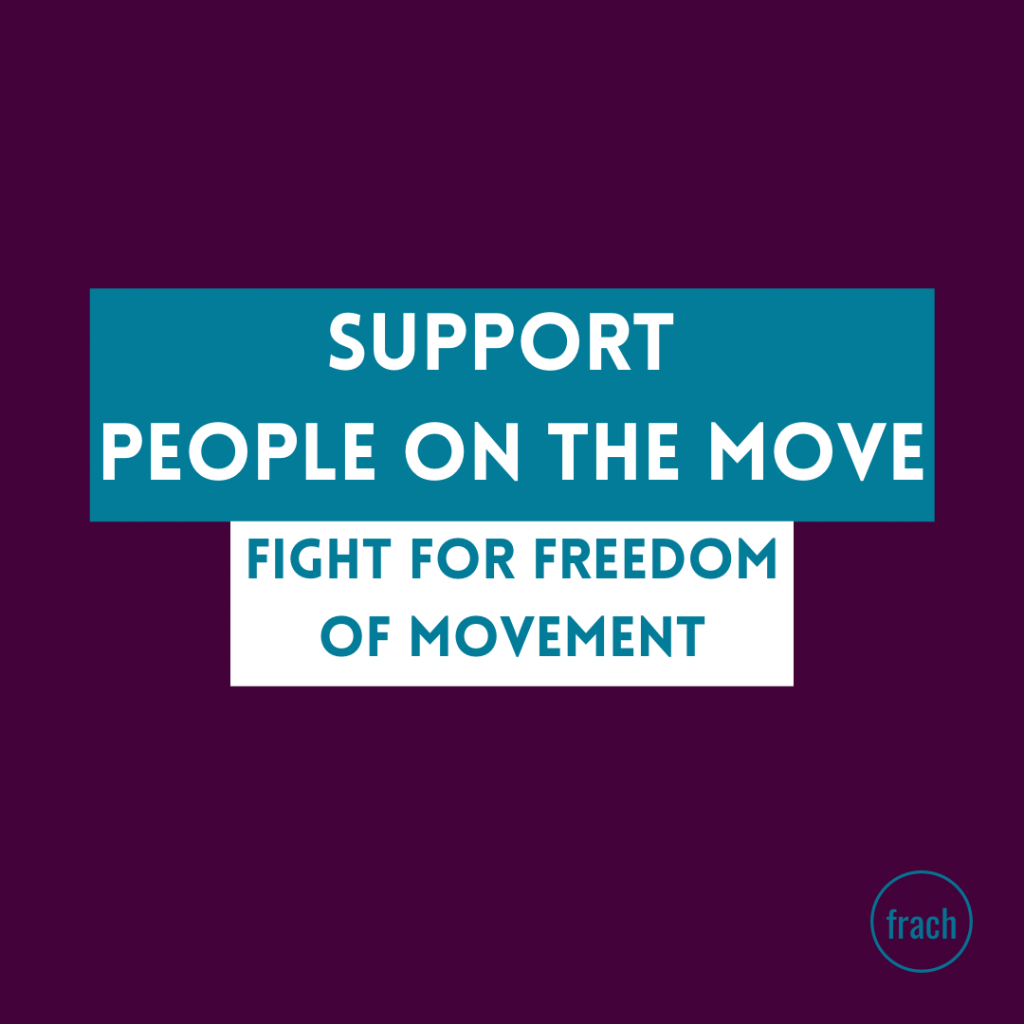
Reference List
Amnesty International. (2020). EU: Inquiry into European complicity in Croatian border violence against migrants and refugees “significant.” [online] Available at: https://www.amnesty.org/en/latest/press-release/2020/11/eu-inquiry-into-european-complicity-in-croatian-border-violence-against-migrants-and-refugees-significant/ [Accessed 11 Oct. 2021].
Antwort der Bundesregierung auf die Kleine Anfrage der Abgeordneten Luise Amtsberg, Dr. Irene Mihalic, Filiz Polat, weiterer Abgeordneter und der Fraktion BÜNDNIS 90/DIE GRÜNEN -Drucksache 19/27094 – Pushback-Vorwürfe gegen Frontex und die Rolle der deutschen Einsatzkräfte. (2021).
Border Violence Monitoring Network. (2021). Balkan Region Report – August 2021 – Border Violence Monitoring Network. [online] Available at: https://www.borderviolence.eu/balkan-region-report-august-2021/ [Accessed 11 Oct. 2021].
Buckel, S., Graf, L., Kopp, J., Löw, N. and Pichl, M. (2021). Kämpfe um Mirgationspolitik seit 2015.
Danish Refugee Council. (2021). Border Monitoring Factsheet August 2021. [online] Available at: https://drc.ngo/media/g1hh44vs/2021_08_drc-bih_border-monitoring-factsheet.pdf [Accessed 11 Oct. 2021].
Deutschlandfunk. (2021). Illegale Abschiebungen an der EU-Grenze – Medien dokumentieren gewaltsame Pushbacks in Kroatien. [online] Available at: https://www.deutschlandfunk.de/illegale-abschiebungen-an-der-eu-grenze-medien.2897.de.html?dram:article_id=503898 [Accessed 11 Oct. 2021].
IMHOFF, G. (2019). Kroatien erfüllt alle Bedingungen für Beitritt zum Schengen-Raum. [online] Deutschland – European Commission. Available at: https://ec.europa.eu/germany/news/20191022-kroatien_de [Accessed 11 Oct. 2021].
Kroatiens Innenminister Davor Božinović gibt Misshandlungen von Flüchtlingen durch Polizisten zu. (2021). Der Spiegel. [online] 8 Oct. Available at: https://www.spiegel.de/ausland/kroatien-innenminister-davor-bozinovic-gibt-misshandlungen-von-fluechtlingen-zu-a-8d22592d-0ce3-44b9-8b71-c94e62f08c14 [Accessed 11 Oct. 2021].
Schweizer Radio und Fernsehen (SRF). (2021). Pushbacks an EU-Grenze – Video-Beweis: Kroatische Polizisten prügeln Migranten aus der EU. [online] Available at: https://www.srf.ch/news/international/pushbacks-an-eu-grenze-video-beweis-kroatische-polizisten-pruegeln-migranten-aus-der-eu [Accessed 11 Oct. 2021].
tagesschau.de (2021). Bosnisch-kroatische Grenze: Maskierte prügeln Migranten aus der EU. [online] tagesschau.de. Available at: https://www.tagesschau.de/ausland/europa/pushbacks-gewalt-bosnien-kroatien-101.html [Accessed 11 Oct. 2021].
